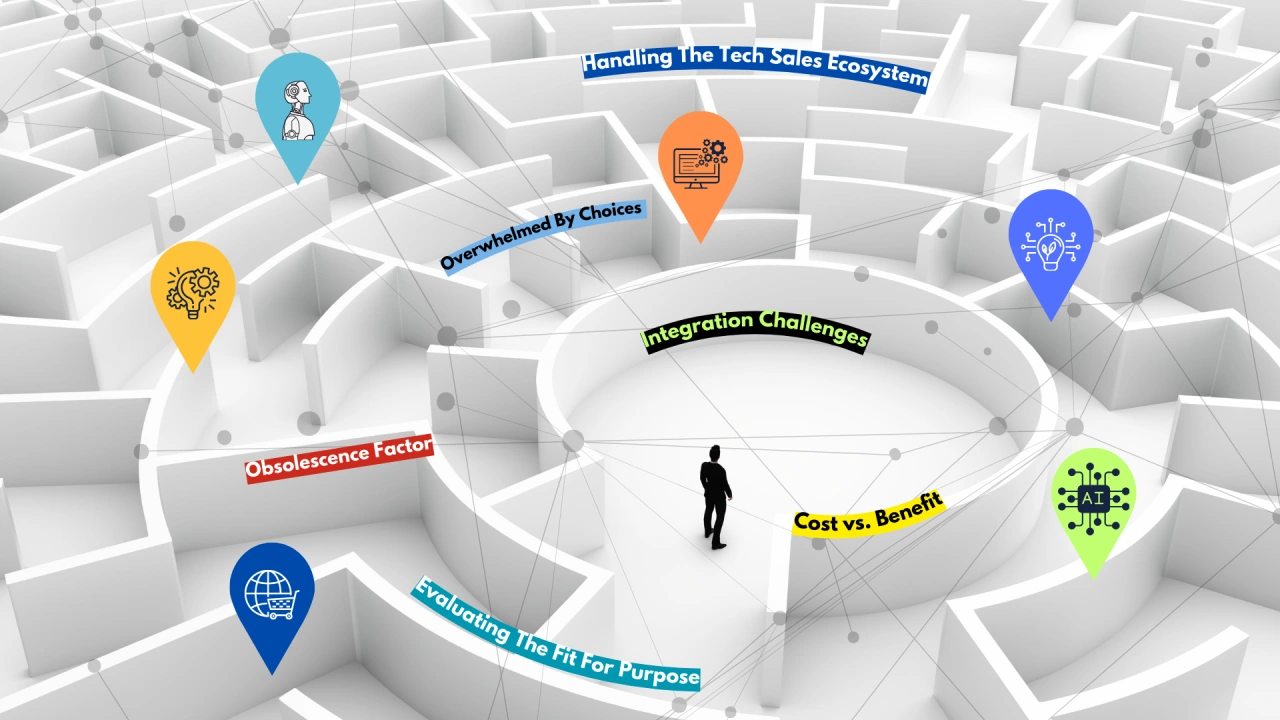There is a technology sales overdose in today’s overcharged technological landscape. Companies are bombarded with an overwhelming array of technology solutions. As the EFS Group CEO, I have been receiving hundreds of emails every week. Some are aggressive, putting me in a professional fix to respond. For instance, today, I saw an email with a caption from a technology company quoting ‘Enough is Enough’, which took me aback as this is entirely unethical.
While I agree it is suitable for companies to evaluate all available beneficial choices, the sheer volume of options—coupled with aggressive sales tactics—is just non-comprehensible. These sales tactics and practices create significant challenges for organizations trying to determine the most effective tools for their needs, especially for SMEs that do not have the resources to evaluate their merits or provide for their cost. This roundup explores the critical issues companies face as they navigate this oversupply and assess the effectiveness of technology solutions.
Overwhelmed by Choices
The tech market seems to be experiencing an explosion with an oversupply of products and solutions, each promising transformative results, whether it’s robotics, AI, biometrics, or business flow management. Companies are finding themselves overwhelmed by choices, not just in the number of available options but also due to the variations in features, pricing, and compatibility, leading to a state of decision paralysis, where making an informed choice becomes daunting.
Handling the Tech Sales Ecosystem, Aggressive Tactics
These tech vendors employ aggressive sales strategies that can pressure companies to make quick decisions, often needing more time to assess the products’ alignment with their needs. Sales pitches emphasizing urgency over accuracy can lead companies to adopt ill-suited technologies for their operations, resulting in wasted resources and potential disruption.
Evaluating the Fit for Purpose, Effectiveness
Determining the effectiveness of a technology solution is the most significant challenge. Finding appropriate metrics for evaluation can vary widely depending on the type of technology and the business goals it aims to support. Companies must develop a clear framework for measuring technology effectiveness, including setting specific, measurable goals before implementation, and conducting ongoing performance reviews to ensure these goals are met, especially in the current technology landscape where goalposts keep changing. This influx of technology solutions is creating problems in evaluating the right fit.
Integration Challenges
Even the right technology can fail to deliver the expected benefits if it does not integrate well with existing systems. Technical compatibility issues can hinder the seamless operation of new solutions, affecting user adoption and overall productivity. Companies must evaluate not only the performance of the latest tech solution but also its compatibility with their current infrastructure.
Cost vs. Benefit
The cost of technology solutions isn’t just financial; it also includes training time, implementation costs, and potential downtime. Companies must weigh these costs against the expected benefits, a complex calculation requiring a clear understanding of the direct and indirect costs associated with a technology solution. It is, therefore, essential to see the holistic merits of not just the functionality of a new offering but the time and resources for any new solution.
Obsolescence Factor: How to Ensure Future-Proofing
The obsolescence factor is reigning in the current tech world. In my experience, solutions as short as 24 months are becoming obsolete between the implementation period and steady face. Most companies face the challenge of how-to future-proof their technology investments. This entails requiring them to not only assess current effectiveness but also anticipate future needs and advancements. This necessitates a strategic approach to technology adoption, focusing on scalability and adaptability.
Way Forward
My suggestions for my team and other companies in this regard are as follows:
- Focus on Your Needs: Despite the multiple and, in some cases, aggressive approaches, don’t get overwhelmed. Focus on engaging on the needs or areas that are currently unexplored for your business. Avoid wasting time by reviewing and meeting partners that are offering solutions for existing technologies unless you are ready to change.
- Develop a Robust Evaluation Process: Establish clear criteria and processes for evaluating technology solutions, including pilot programs and phased rollouts.
- Prioritise Needs Over Features: Focus on solutions that address specific business needs rather than getting swayed by impressive but not essential features.
- Foster Strong Vendor Relationships: Engage with vendors to understand their roadmap and support structure, ensuring they align with your long-term needs.
- Invest in Training: Allocate resources for comprehensive training to ensure high adoption and effective use of new technologies.
- Stay Informed: Keep abreast of technology trends and developments to make informed decisions that align with current and future business objectives.
The approach above can help address the issues between the tech sales barrage and the vast available choices, where companies can make more informed decisions in their technology investments, enhancing operational efficiency within their financial limits.
